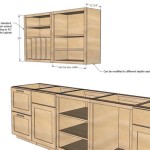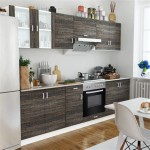Spray Paint For Kitchen Cupboard Handles: A Comprehensive Guide
Kitchen cupboard handles are frequently overlooked, yet they contribute substantially to the overall aesthetic and functionality of a kitchen. While replacing handles can be an effective way to update the look of a kitchen, it can also be costly and time-consuming. Spray painting provides a more budget-friendly and efficient alternative for transforming the appearance of existing cupboard handles. This article offers a comprehensive guide to spray painting kitchen cupboard handles, covering preparation, product selection, application, and maintenance, ensuring a professional and durable finish.
Spray painting cupboard handles offers several advantages over other methods, such as brushing. Spray paint provides a smooth, even coverage, minimizing brushstrokes and imperfections. It is also a faster application process, particularly when dealing with numerous handles. Moreover, spray paint is adept at reaching intricate details and contours often found in handle designs, resulting in a uniformly coated surface. However, achieving a successful outcome requires meticulous preparation, appropriate product selection, and careful application techniques.
Key Point 1: Preparation is Paramount
The success of any spray painting project hinges on thorough preparation. This stage ensures proper adhesion of the paint, a smooth finish, and a long-lasting result. Neglecting preparation can lead to peeling, chipping, and an unsatisfactory appearance.
Removal of Handles: The first step is to remove the handles from the cupboard doors and drawers. This allows for easier handling and prevents overspray onto the surrounding cabinetry. Use a screwdriver appropriate for the handle screws. Store the screws in a labeled bag or container to make reinstallation easier.
Cleaning and Degreasing: Even seemingly clean handles can harbor grease, dirt, and grime that can impede paint adhesion. Wash the handles thoroughly with warm water and a degreasing cleaner, such as dish soap or a specialized degreaser. Use a scrub brush or sponge to remove stubborn residue. Rinse thoroughly with clean water and allow the handles to dry completely.
Sanding: Sanding creates a textured surface that promotes paint adhesion. Use fine-grit sandpaper (220-grit or higher) to lightly sand the handles. The goal is not to remove the existing finish entirely, but rather to roughen the surface. Pay particular attention to areas with glossy or smooth finishes. After sanding, wipe the handles clean with a tack cloth to remove any sanding dust.
Priming (Optional but Recommended): Priming is an optional but highly recommended step, especially for handles made of metal or those with a previously painted surface. Primer creates a uniform base for the paint, improves adhesion, and can prevent rust or corrosion on metal handles. Choose a primer specifically formulated for the material of the handles. Apply the primer in thin, even coats, following the manufacturer's instructions. Allow the primer to dry completely before moving on to the next step.
Masking (If Necessary): If the handles have decorative elements or areas that should not be painted, carefully mask them off with painter's tape. Ensure the tape is securely adhered to prevent paint from bleeding underneath.
Work Area Preparation: Choose a well-ventilated area for spray painting. Cover the work surface with drop cloths or newspaper to protect it from overspray. A spray painting booth or enclosure can help contain the spray and prevent it from drifting onto other surfaces.
Key Point 2: Selecting the Right Spray Paint
Choosing the appropriate spray paint is crucial for achieving a durable and aesthetically pleasing finish. Several factors should be considered when selecting spray paint for kitchen cupboard handles, including the material of the handles, the desired finish, and the durability requirements.
Type of Spray Paint: There are several types of spray paint available, each with its own unique properties and suitability for different applications.
Acrylic Spray Paint: Acrylic spray paint is water-based and offers good durability, color retention, and UV resistance. It is a good choice for general-purpose applications and is available in a wide range of colors and finishes.
Enamel Spray Paint: Enamel spray paint is oil-based and provides a hard, durable finish that is resistant to scratches and chipping. It is a good choice for high-traffic areas and surfaces that are subject to wear and tear. However, enamel spray paint typically requires longer drying times and may emit stronger odors than acrylic spray paint.
Epoxy Spray Paint: Epoxy spray paint is known for its exceptional durability and resistance to chemicals, abrasion, and corrosion. It is often used for industrial applications and is a good choice for handles that are exposed to harsh conditions. However, epoxy spray paint can be more expensive and may require specialized application techniques.
Specialty Spray Paints: Specialty spray paints are available for specific applications, such as painting metal, plastic, or wood. These paints often contain additives that improve adhesion, durability, and resistance to specific elements. For example, a spray paint formulated for metal may contain rust inhibitors to prevent corrosion.
Finish: Spray paint is available in a variety of finishes, including gloss, semi-gloss, satin, and matte. The choice of finish depends on the desired aesthetic and the level of sheen desired. Gloss finishes are the most reflective and offer the highest level of durability, while matte finishes are the least reflective and provide a more subtle look. Semi-gloss and satin finishes fall in between, offering a balance of durability and sheen.
Color: Choose a color that complements the overall design of the kitchen and the existing cabinetry. Consider using a color that contrasts with the cabinetry to create a visual impact, or choose a color that blends in seamlessly for a more understated look.
Considerations for Handle Material: Different handle materials may require different types of spray paint. For example, metal handles may benefit from a spray paint with rust inhibitors, while plastic handles may require a spray paint that is specifically formulated for plastic surfaces.
Key Point 3: Application Techniques for a Professional Finish
Proper application techniques are essential for achieving a smooth, even, and durable finish when spray painting kitchen cupboard handles. Poor application can lead to runs, drips, orange peel texture, and an overall unprofessional appearance.
Spraying Technique: Hold the spray can approximately 8-10 inches away from the handles. Use a smooth, even, back-and-forth motion, overlapping each pass slightly. Avoid holding the spray can in one place for too long, as this can cause paint to build up and create runs or drips. Keep the spray can moving at a consistent speed to ensure even coverage.
Multiple Thin Coats: Apply several thin coats of spray paint rather than one thick coat. This allows the paint to dry properly and prevents runs or drips. Allow each coat to dry completely before applying the next coat, following the manufacturer's instructions for drying time.
Proper Ventilation: Ensure adequate ventilation in the work area to prevent the build-up of fumes. Wear a respirator or mask to protect yourself from inhaling spray paint particles.
Avoiding Runs and Drips: If runs or drips occur, do not attempt to wipe them away while the paint is wet. Allow the paint to dry completely, then sand down the imperfections with fine-grit sandpaper before applying another coat of paint.
Turning and Positioning Handles: When spray painting, ensure all surfaces of the handles are coated evenly. This may require turning and repositioning the handles during the application process. Use a paint stand or jig to hold the handles in place and make them easier to rotate.
Drying Time: Allow the spray paint to dry completely before handling the handles. Follow the manufacturer's instructions for drying time. Avoid rushing the drying process, as this can lead to a soft or tacky finish.
Curing Time: In addition to drying time, most spray paints also require a curing time to fully harden and achieve maximum durability. Curing time can range from several days to several weeks, depending on the type of spray paint. Allow the handles to cure completely before reinstalling them on the cupboard doors and drawers.
Reinstallation: Once the paint has fully dried and cured, carefully reinstall the handles onto the cupboard doors and drawers. Use the original screws or replace them with new screws if necessary. Avoid overtightening the screws, as this can damage the handles or the cabinetry.
Spray painting kitchen cupboard handles is a cost-effective and efficient way to update the look of a kitchen. By following the guidelines outlined in this article, individuals can achieve a professional and durable finish that will enhance the aesthetic appeal of their kitchen for years to come. Attention to detail during each stage of the process, from preparation to application, is key to ensuring a successful outcome.

Painted Cabinet Hardware Rust Oleum

Spray Paint Brass Kitchen Knobs Cabinet Pulls

Yes You Can Spray Paint Cabinet Hardware Porch Daydreamer

Painted Kitchen Cabinet Hardware Rust Oleum

How To Spray Paint Cabinet Hardware And Hinges Life S Ahmazing

How To Spray Paint Kitchen Cabinet Hardware Thrifty Decor Diy And Organizing

Spray Paint Brass Kitchen Knobs Cabinet Pulls

How To Spray Paint Kitchen Cabinet Hardware Thrifty Decor Diy And Organizing

Diy Brass Painted Kitchen Hardware Lavender Julep

Update Done For Cabinet Handles Hardware Refinish Spray Painted Next Project Fix The Ug Painting Cabinets Interior Paint Diy Kitchen Renovation
Related Posts








